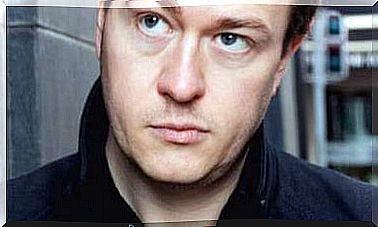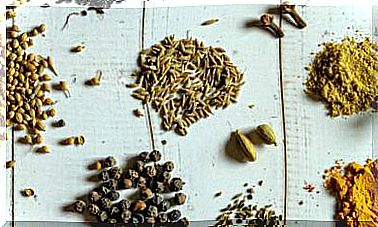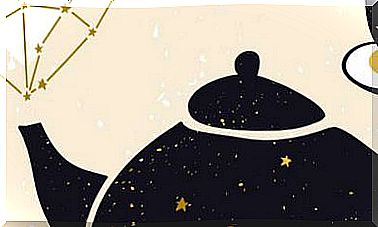Demedicalize Conception, Pregnancy And Childbirth
In childbirth, medical interventions should be the exception rather than the norm. That is why it is essential to trust the process.

In 1915, during an annual meeting of the American Association for the Study and Prevention of Infant Mortality, obstetrician Joseph DeLee presented his vision of childbirth as a “pathological process” that should be attended exclusively by obstetricians, and recommended the systematic use of forceps and episiotomy, the administration of sedatives and chloroform, as well as derivatives of wheat to accelerate the exit of the placenta.
His treatises became a decisive influence from the 1930s onwards, thus contributing to the neglect of traditional knowledge and the medicalization of childbirth.
Recover instinct
If these practices have been imposed in a generalized way, it has been largely because fear, indolence, the abandonment of responsibility for our health in the hands of others and an almost voluntary ignorance have prevailed over instinct, and have made contact with us difficult. themselves and with nature, making us forget that we are humans but also mammals.
Faced with medicalization and its false security based on technology, pharmacology and the substitution of natural processes for artificial protocols, it is convenient to recover instinct and trust in nature.
The more women accept their wild side, the more confident they will be when making decisions in the face of pressure from a medical establishment devoted to technology. The increasing difficulty of women in industrialized countries to conceive and give birth has been noted for some time. According to the WHO, in 2011, 5 children were born per woman in Africa, while in Europe the average was 1.6.
The treatments of artificial fertilization have become a lucrative business: in Spain are made more than fifty thousand each year, of which about nine thousand children are born. This loss of biological capacity is the result of numerous aggressions typical of the modern way of life and that would need to be addressed from multiple approaches.
For this reason, before making the decision to undergo these procedures, alternative solutions should be sought, since infertility problems often have to do with situations of stress, anguish or depression, and can be alleviated through certain eating guidelines – favoring the contribution of vitamin E, for example – or with the help of a psychotherapist who works in a holistic line.
How to prepare to have a child
From the moment you make the decision to have a child, you have to focus on the preparations so that everything flows in the best possible way: doing an internal cleaning and adopting eating guidelines and healthy lifestyle habits. In short, to become aware that the mother’s body will be the ecosystem in which the child will develop, first inside and then outside but also dependent on her, her skin and her milk, at least during the first year of life.
Reliance on natural processes provides instinctive security throughout pregnancy that minimizes analyzes, tests, and ultrasounds that can affect the baby’s neurological development, blood cells, and genetic makeup.
Modern medicine strives to treat pregnant women as patients. This has led to the use of drugs with serious complications to treat symptoms that largely correspond to the body’s attempts to cleanse the pregnancy.
The thalidomide which was marketed to treat nausea – and diethylstilbestrol (DES) -to reduce the risk of abortion are two examples sadly known. The first was banned in 1961 after causing deformities in more than 20,000 babies in 50 countries; and DES – marketed in Spain as Protectone – was banned in 1971 when it was determined that it caused a rare type of vaginal cancer in tens of thousands of adolescents whose mothers had taken it.
Be clear about how we want the delivery to develop
Although thirty years ago the WHO considered that medical interventions are only justified in a maximum of 10% of deliveries, the reality is just the opposite: only a minority take place naturally and spontaneously. That is why it is so important to take an active role and be clear about how we want the birth to develop, also counting on the help of the couple.
If you speak with the responsible professionals beforehand – and even write down what you want and what you don’t want – most unnecessary or dangerous interventions can be avoided: letting the delivery occur spontaneously and not cause it because the calendar indicates it, which will avoid having to use synthetic oxytocin that could damage the baby’s liver and inhibit milk production; avoid horizontal posture that hinders the baby’s transit; prevent routine interventions that should be reserved exclusively for emergencies: episiotomy, monitoring or caesarean sections.
Crucial moments
Perhaps the most important criticism that can be made of medicalized childbirth is the practice of separating the child from its mother at birth. Except in the very few cases in which the life of the baby is in danger, there is nothing to justify this violent separation with very serious consequences for the development of the baby: it is not urgent to weigh or measure it and the administration of vitamin K is not precise if it has been allowed have all the blood from the placenta pass through the cord before it is clamped or cut.
In those crucial moments in which the baby goes through the tunnel between two totally different worlds, in which it passes from eternity to time, from floating to meeting gravity, from the internal sound of the mother to the noises of the outside world, from direct food From the placenta to the fire of the first breath of air in her lungs, she needs the lullaby, the skin, the smell of her original habitat, to maintain the connection with the mother’s body.
We will have a better chance of living a free and happy life if we are born in a harmonious way than if we are born in a traumatic and uniform way.









